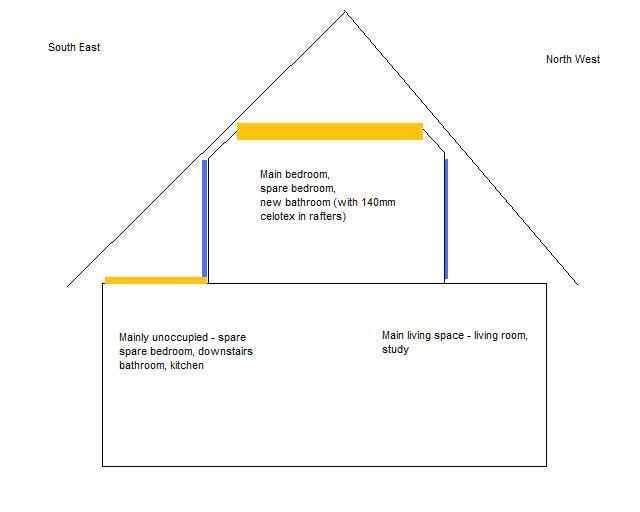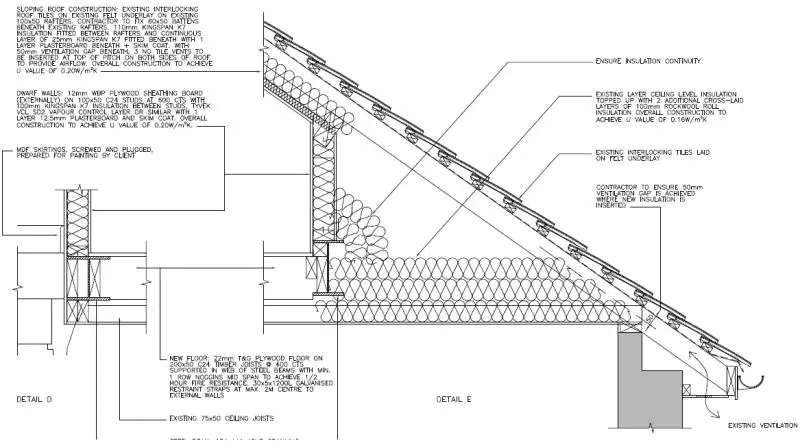We live in a chalet style dormer house, and therefore the first floor rooms are cut into the eaves. We also have a loft, which I've fully insulated.
The first floor rooms are rather cold though in this freezing weather, and the heating (in the dormer window) in the main bedroom isn't particularly effective at heating the room. I think I need to better insulate the eaves, as they are probably larger than the attic space in total.
The stud / plasterboard walls of the rooms are insulated with a thin layer of polystyrene, however the eaves floor / ground floor ceiling isn't particularly well insulated - in some places none, in other places maybe 150mm of rockwool. I can't actually get to the floor easily at all in some areas as its been boarded over.
The rafters aren't insulated at all (they are felted), although some areas have a thin layer of fibreboard pinned to the rafters. We've had a new bathroom installed upstairs, and the rafters in this room have been insulated with 140mm celotex to comply with building regs (although I don't actually think the walls have been insualted with anything... I don't remember the chippie having enough to do the walls as well as the rafters).
I was thinking it would be more cost effective (and easier) to insulate the rafters in the eaves, rather than both the floor and wall. However I believe Celotex isn't cheap.... Granted I'm not looking to do it to building regs standards yet, but we don't have much (any) money left after all the other work we've had done.
Or could I use space blanket / rockwool in the eaves?
or would I be as well to do the walls / floor rather than the rafters? If so, why?
Is that polystyrene board (of varying thickness) you buy from B&Q of any use at all for walls / rafters, or would it really be better getting something more specialist like the Celotex?
The first floor rooms are rather cold though in this freezing weather, and the heating (in the dormer window) in the main bedroom isn't particularly effective at heating the room. I think I need to better insulate the eaves, as they are probably larger than the attic space in total.
The stud / plasterboard walls of the rooms are insulated with a thin layer of polystyrene, however the eaves floor / ground floor ceiling isn't particularly well insulated - in some places none, in other places maybe 150mm of rockwool. I can't actually get to the floor easily at all in some areas as its been boarded over.
The rafters aren't insulated at all (they are felted), although some areas have a thin layer of fibreboard pinned to the rafters. We've had a new bathroom installed upstairs, and the rafters in this room have been insulated with 140mm celotex to comply with building regs (although I don't actually think the walls have been insualted with anything... I don't remember the chippie having enough to do the walls as well as the rafters).
I was thinking it would be more cost effective (and easier) to insulate the rafters in the eaves, rather than both the floor and wall. However I believe Celotex isn't cheap.... Granted I'm not looking to do it to building regs standards yet, but we don't have much (any) money left after all the other work we've had done.
Or could I use space blanket / rockwool in the eaves?
or would I be as well to do the walls / floor rather than the rafters? If so, why?
Is that polystyrene board (of varying thickness) you buy from B&Q of any use at all for walls / rafters, or would it really be better getting something more specialist like the Celotex?



